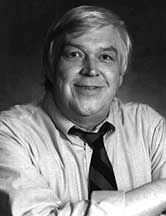New Eyes and Ears through Media Literacy
|
|
What does it take to bring a July 4 concert to the world?
We do not admire what we cannot understand. I forget who said that, but it's true.
The more people learn about the media, the more that knowledge changes our perceptions — changes how we look at an ad or read a newspaper, changes how we listen to music or watch TV ourselves. Anyone who's ever acted as a director — even on a three-camera, local access TV show — begins to watch TV paying attention to how professional directors work. Work a 12 channel sound board for just one night and you'll gain a new and abiding respect for the talents of those who do it every day.
And because I know very little about sound and directing for TV, I'm in awe of the live coverage of the Boston Pops 4th of July concert on the Esplanade last week. It was simply superb.
Media literacy does not change the media so much as it changes us.
I can't imagine how challenging it was to do the sound, but I do have a very small idea. I counted over 30 microphones in the midst of the orchestra — and those were just the ones to pick up the instrumentals. There were vocal mikes for the guests and conductor Keith Lockhart, not to mention at least four more for the emcees on a rooftop far away commenting on the music and fireworks.
Some mikes were sitting in front of whole sections of the orchestra; others were attached to specific instruments. Whoever was running the sound for broadcast had to know as much about the musical selections as the performers themselves. When it was important to hear the violins, we heard violins; when it was time to hear trumpets, we heard trumpets. If you listened closely enough, you could even hear the percussion players striking a tambourine or a triangle.
I thought about that for a minute as I was watching — in the midst of a huge symphony orchestra playing in front of half a million people, whoever was running the sound made sure that those of us sitting at home could hear the tapping of an individual tambourine. Incredible.
The directing of the program — deciding which pictures were broadcast when — must have been even more challenging, and it was even more impressive. I counted 14 different pictures simultaneously. Some cameras were on the stage; at least one was on a crane; others were in remote locations to capture the firing of the cannon and the shots of church bells ringing for the 1812 Overture. The director not only had to decide which picture was put on the air at any particular instant, but was also responsible for getting the next shot ready.
And it came off flawlessly. When the French horns played, the picture of them was there from their first note, not five seconds after they started. This requires incredible rehearsal, concentration, and teamwork. I have no doubt that the director had a musician sitting next to him in the control room, with the sheet of music open on the desk before them. "The violins are next. Get ready for a violin shot. Here's where the tuba comes in," thinking and planning and getting images ready ten seconds before a change actually happens musically on stage.
As a matter of fact (because I was watching for such things), I actually saw the Boston Pops guy standing there next to the howitzers with the music in his hands, following along with the 1812 Overture. His only job was to anticipate the precise second when the score called for the cannons to explode, and to tap the shoulder of the officer in charge of giving the order to the soldiers who actually shot the shells right on cue.
But it wasn't just technical expertise that makes me watch the broadcast of this holiday tradition every year. It was the art and teamwork of it all, too
Some of the pictures were tight close-ups, shots of performer's faces (including one young violinist who was silently mouthing the words to "Strangers in the Night" as she played it on her violin). There were tight shots of just a set of fingers on a trumpet, the vibrating strings of a well-worn cello, the mix of facial expressions of the orchestra members themselves. Some were joyous and nearly playful, smiling and having the time of their lives playing in the concert; others were dour and professional. But the video director, in composing and directing the shots he selected for broadcast, brought home the point that these were all individual people — each with a love for the music and a talent for playing it — sitting there on a balmy July evening making music for literally millions of people — some in the live audience, the rest of us watching at home.
This isn't merely a fan letter about a concert which was broadcast with technical skill and even art. It's about how even the slightest amount of media literacy allows us to experience the event differently — with new eyes and ears and sensibilities.
Media literacy does not change the media so much as it changes us. It changes how we perceive and appreciate the constructed reality we see and hear every day. Understanding even the basics of what goes into the creation of any media event is the first step understanding and even sometimes admiring it. The national telecast of the 4th of July Esplanade concert was our opportunity to do both.



